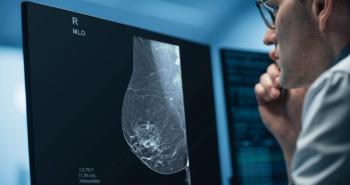
Tomosynthesis Boosts Accuracy in Breast Screening
Three-dimensional imaging with breast tomosynthesis increases diagnostic accuracy and reduces false positive recall rates.
Three-dimensional imaging with breast tomosynthesis increases diagnostic accuracy and reduces false positive recall rates, say researchers in a study in the journal Radiology.
“The beauty of tomosynthesis is that it addresses two major concerns with screening mammography: missed cancers and false positive rates,” lead researcher Elizabeth A. Rafferty, MD, said in a press release. Rafferty is the director of Breast Imaging at the Avon Comprehensive Breast Center at Massachusetts General Hospital in Boston. According to the National Cancer Institute, up to 30 percent of breast cancers are missed by traditional screening mammography and between 8 and 10 percent of women receive false positive results, which then requires them to go for further testing.
Researchers recruited 1,192 women to undergo standard digital mammogram followed by breast tomosynthesis. A total of 997 women, including 780 who were screening cases and 217 who needed pre-biopsy breast imaging, had complete data sets. Total radiation dose for the combined procedure was less than 3 milligray, which is the FDA limit for a single mammogram.
Once images were obtained, 27 radiologists participated in two reader studies, 312 (12 radiologists) and 310 cases (15 radiologists), respectively. Forty-eight cancers were detected in the first group, 51 in the second.
The tomosynthesis findings resulted in an increased diagnostic accuracy for all radiologists. Diagnostic sensitivity of the combined exam was increased by 10.7 percent among radiologists in the first study and 16 percent in the second.
False positive recall rates also decreased significantly. Absolute recall rates dropped by 38.6 percent in study one and 17.1 percent in study two.
“In the clinical setting, we would expect that type of reduction in recall rate to translate into a substantial number of unnecessary diagnostic tests being avoided,” said Rafferty.
Newsletter
Stay at the forefront of radiology with the Diagnostic Imaging newsletter, delivering the latest news, clinical insights, and imaging advancements for today’s radiologists.




























